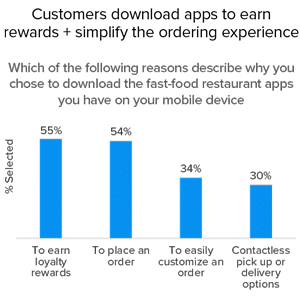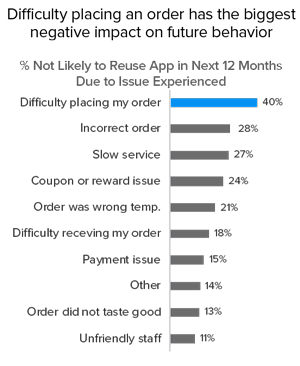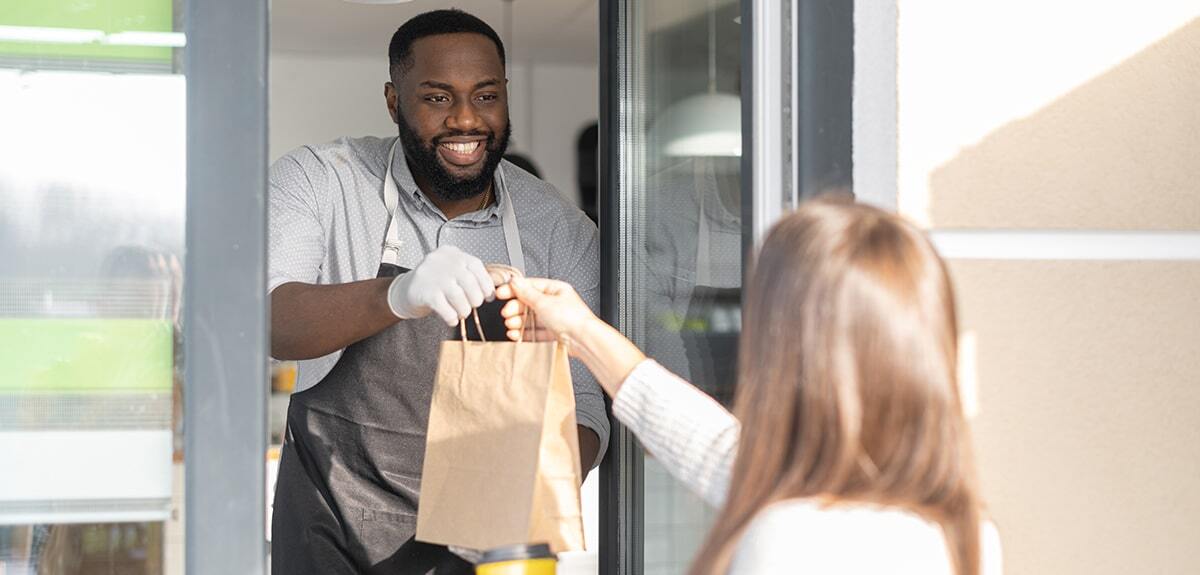Why QSR brands must invest in digital engagement + mobile app UX strategies in 2021
Published on Feb 03, 2021

One of the most tangible examples of 2020's accelerated digital transformation can be found in the QSR segment. Between the months of March and August of 2020, mobile usage increased 40% as safer-at-home policies went into effect and consumers turned to digital touchpoints. To assess the impact on the customer experience and brand loyalty, we asked nearly 16,000 consumers about their experiences with QSR apps. Here’s what we learned.
QSR app downloads have increased significantly in recent years
A 2017 study conducted by SMG revealed just 38% of respondents had a restaurant app installed on their phones. In our most recent study, that percentage has more than doubled to 83%—with nearly 1 in 3 customers having 5 or more fast food apps installed—and 2 in 3 have ordered through an app at least once in the past 30 days. The top reasons cited for downloading a restaurant app show customers are most often seeking out the loyalty rewards offered through app orders, as well as the simplified ordering/customization process and ability to have a contactless experience.

While features and promotions may inspire downloads, brands that offer a differentiated experience can turn their apps into true revenue-generators by driving usage rates and increased visit frequency. We turned SMG's market intelligence tool—the fastest, most accurate source of behavioral data linked to customer feedback in real time—to see how respondents’ app preferences lined up with their actual visit behaviors.
The analysis revealed customers who have a favorite restaurant app visit that brand 2 more times per month on average compared to customers who don’t identify it as their favorite restaurant app. Brands that deliver a differentiated app experience aren’t just driving satisfaction and loyalty—they’re inspiring customers to visit and spend more often.
To drive usage + retention, brands must deliver a seamless experience
While our situations have changed over the past year, the need to deliver on the promise of exceptional customer experience has not. Many brands have been able to step up in this era of digital interaction with 91% of respondents saying that ordering through the app was about the same as, or better than, ordering in person. However, one poor experience can have a snowball effect that leads to infrequent usage and the app ultimately being deleted. In fact, 2 in 5 respondents reported having deleted at least one restaurant app from their phones in the past 3 months.
This means it’s even more important than ever to understand the why behind the data. In our study, 40% of customers said they will likely not use the app again in the next 12 months due to difficulty placing an in-app order. With customers citing simplified ordering processes as a key reason for downloading the app, it’s table stakes to get this core functionality right each and every time. Any touchpoint that introduces friction in the purchase process will, at best, discourage future usage and, at worst, put their brand loyalty at risk.

Brands that offer feature-rich apps + innovate fulfillment processes have much to gain
As app adoption and usage rates have increased, some brands have found innovative ways to incorporate digital channels into their overall brand experience. From having dedicated drive-thru lanes for online orders to designating entire storefronts as pickup-only, much of the focus has been on streamlining the order fulfillment process.
However, one of the biggest benefits of connecting with consumers on mobile is often overlooked—the ability to offer a more personalized experience. Whether it’s using transaction history to offer incentives on favorite items, gathering direct and personalized feedback, or simply enabling users to save their order customizations for future use, apps allow brands to collect customer-level data that can be used in ways that make it easier to engage with them during future interactions.
Futureproof your customer experience with a best-in-class digital transformation strategy
The pandemic certainly accelerated digital innovation efforts, but the benefits for those who continue to prioritize investments in 2021 and beyond will be long-lasting. To make sure you’re customer engagement strategy is keeping pace with rapidly-evolving behaviors and expectations, check out our latest report: 4 restaurant industry trends shaping the future of customer experience.
Related articles

From Touchpoint to Focal Point—Championing Mobile App Adoption for QSR
Mobile app adoption means more opportunities to share promotions, events, and new menu items with your customers. Here is how to tailor it to your brand.

3 experience management tenets executives should adopt this year
While the curveball that was 2020 is behind us, many of us in the experience management (XM) space are still getting our arms around the magnitude of change in our programs as we rapidly adapted to me

Creating a Customer Experience App that Serves Customers First
As of last June, 81% of Americans owned a smartphone. In the throes of this convenience revolution—as more consumers turn to their phones for research and to make purchases—the pressure for brands to